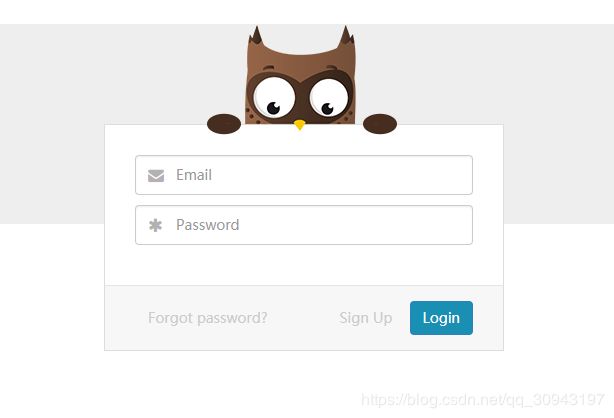SpringBoot 学习——静态资源和拦截器处理
参考博客:
[1] Spring Boot干货系列:(六)静态资源和拦截器处理
[2] 微服务 SpringBoot 2.0(八):静态资源和拦截器处理
默认资源映射
Spring Boot 默认为我们提供了静态资源处理,使用 WebMvcAutoConfiguration 中的配置各种属性。
建议大家使用Spring Boot的默认配置方式,提供的静态资源映射如下:
- classpath:/META-INF/resources
- classpath:/resources
- classpath:/static
- classpath:/public
上面这几个都是静态资源的映射路径,优先级顺序为:META-INF/resources > resources > static > public
接管Spring Boot的Web配置
在你既需要保留Spring Boot提供的便利,有需要增加自己的额外的配置的时候,可以定义一个配置类并继承WebMvcConfigurerAdapter,无需使用@EnableWebMvc注解。
这里我们提到这个WebMvcConfigurerAdapter这个类,重写这个类中的方法可以增加额外的配置,这里介绍几个常用的。
1. 自定义资源映射addResourceHandlers:
比如,我们想自定义静态资源映射目录的话,只需重写addResourceHandlers方法即可。
@Configuration
public class MyWebMvcConfigurerAdapter extends WebMvcConfigurerAdapter {
/**
* 配置静态访问资源
* @param registry
*/
@Override
public void addResourceHandlers(ResourceHandlerRegistry registry) {
registry.addResourceHandler("/my/**").addResourceLocations("classpath:/my/");
super.addResourceHandlers(registry);
}
}通过addResourceHandler添加映射路径,然后通过addResourceLocations来指定路径。我们访问自定义my文件夹中的elephant.jpg 图片的地址为 http://localhost:8080/my/elephant.jpg
如果你想指定外部的目录也很简单,直接addResourceLocations指定即可,代码如下:
@Override
public void addResourceHandlers(ResourceHandlerRegistry registry) {
registry.addResourceHandler("/my/**").addResourceLocations("file:E:/my/");
super.addResourceHandlers(registry);
}addResourceLocations指的是文件放置的目录,addResoureHandler指的是对外暴露的访问路径
2. 页面跳转addViewControllers:
以前写SpringMVC的时候,如果需要访问一个页面,必须要写Controller类,然后再写一个方法跳转到页面,感觉好麻烦,其实重写WebMvcConfigurerAdapter中的addViewControllers方法即可达到效果了。
/**
* 以前要访问一个页面需要先创建个Controller控制类,再写方法跳转到页面
* 在这里配置后就不需要那么麻烦了,直接访问http://localhost:8080/toLogin就跳转到login.html页面了
* @param registry
*/
@Override
public void addViewControllers(ViewControllerRegistry registry) {
registry.addViewController("/toLogin").setViewName("login");
super.addViewControllers(registry);
}值的指出的是,在这里重写addViewControllers方法,并不会覆盖WebMvcAutoConfiguration中的addViewControllers(在此方法中,Spring Boot将“/”映射至index.html),这也就意味着我们自己的配置和Spring Boot的自动配置同时有效,这也是我们推荐添加自己的MVC配置的方式。
3. 拦截器addInterceptors:
拦截器在我们项目中经常使用的,这里就来介绍下最简单的判断是否登录的使用。
要实现拦截器功能需要完成以下2个步骤:
- 创建我们自己的拦截器类并实现 HandlerInterceptor 接口
- 其实重写WebMvcConfigurerAdapter中的addInterceptors方法把自定义的拦截器类添加进来即可(Spring Boot 1.x)
- implements WebMvcConfigurer(Spring Boot 2.x)
自定义拦截器代码:
package com.springboot.interceptor;
public class MyInterceptor implements HandlerInterceptor {
@Override
public boolean preHandle(HttpServletRequest request, HttpServletResponse response, Object handler) throws Exception {
User user=(User)request.getSession().getAttribute("user");
if(null==user){
response.sendRedirect("toLogin");
return false;
}else{
return true;
}
}
@Override
public void postHandle(HttpServletRequest request, HttpServletResponse response, Object handler, ModelAndView modelAndView) throws Exception {
}
@Override
public void afterCompletion(HttpServletRequest request, HttpServletResponse response, Object handler, Exception ex) throws Exception {
}
}这里我们简单实现了根据session中是否有User对象来判断是否登录,为空就跳转到登录页,不为空就通过。
拦截器统一管理:
addPathPatterns("/**")对所有请求都拦截,但是排除了/loginIn和/login请求的拦截。
/**
* 拦截器
* @param registry
*/
@Override
public void addInterceptors(InterceptorRegistry registry) {
// addPathPatterns 用于添加拦截规则
// excludePathPatterns 用户排除拦截
registry.addInterceptor(new MyInterceptor()).addPathPatterns("/**").excludePathPatterns("/toLogin","/login","/js/**");
}需要注意的是:Spring boot 2.0以后拦截器会拦截所有请求,包括html页面中链接本地静态资源的请求,可以在排除拦截路径中添加
registry.addInterceptor(customerInterceptor).addPathPatterns("/**").excludePathPatterns("/login","/loginIn","/js/**");将默认路径下js文件夹中的内容开放。
页面登录关键代码:
//简单登录操作
$("#doLogin").click(function (e) {
$.ajax({
type : "POST",
url : "/login",
data : {
"userName" : $("#userName").val(),
"password" : $("#password").val()
},
dataType : "json",
success : function(data) {
if (data.result == "1") {
window.location.href ="/learn";
} else {
alert("账号密码不能为空!");
}
}
});
});Controller代码:
package com.springboot.controller;
import com.springboot.domain.LearnResouce;
import com.springboot.domain.User;
import org.springframework.stereotype.Controller;
import org.springframework.web.bind.annotation.RequestMapping;
import org.springframework.web.bind.annotation.RequestMethod;
import org.springframework.web.bind.annotation.ResponseBody;
import org.springframework.web.servlet.ModelAndView;
import javax.servlet.http.HttpServletRequest;
import javax.servlet.http.HttpServletResponse;
import java.util.ArrayList;
import java.util.HashMap;
import java.util.Map;
import java.util.List;
/**
* Created by nlq on 2019/2/19.
*/
@Controller
public class LearnController {
@RequestMapping(value = "/login",method = RequestMethod.POST)
@ResponseBody
public Map login(HttpServletRequest request, HttpServletResponse response){
Map map =new HashMap();
String userName=request.getParameter("userName");
String password=request.getParameter("password");
if(!userName.equals("") && password!=""){
User user =new User(userName,password);
request.getSession().setAttribute("user",user);
map.put("result","1");
}else{
map.put("result","0");
}
return map;
}
@RequestMapping("/learn")
public ModelAndView index(){
List learnList =new ArrayList();
LearnResouce bean =new LearnResouce("官方参考文档","Spring Boot Reference Guide","http://docs.spring.io/spring-boot/docs/1.5.1.RELEASE/reference/htmlsingle/#getting-started-first-application");
learnList.add(bean);
bean =new LearnResouce("官方SpriongBoot例子","官方SpriongBoot例子","https://github.com/spring-projects/spring-boot/tree/master/spring-boot-samples");
learnList.add(bean);
bean =new LearnResouce("龙国学院","Spring Boot 教程系列学习","http://www.roncoo.com/article/detail/125488");
learnList.add(bean);
bean =new LearnResouce("嘟嘟MD独立博客","Spring Boot干货系列 ","http://tengj.top/");
learnList.add(bean);
bean =new LearnResouce("后端编程嘟","Spring Boot教程和视频 ","http://www.toutiao.com/m1559096720023553/");
learnList.add(bean);
bean =new LearnResouce("程序猿DD","Spring Boot系列","http://www.roncoo.com/article/detail/125488");
learnList.add(bean);
bean =new LearnResouce("纯洁的微笑","Sping Boot系列文章","http://www.ityouknow.com/spring-boot");
learnList.add(bean);
bean =new LearnResouce("CSDN——小当博客专栏","Sping Boot学习","http://blog.csdn.net/column/details/spring-boot.html");
learnList.add(bean);
bean =new LearnResouce("梁桂钊的博客","Spring Boot 揭秘与实战","http://blog.csdn.net/column/details/spring-boot.html");
learnList.add(bean);
bean =new LearnResouce("林祥纤博客系列","从零开始学Spring Boot ","http://412887952-qq-com.iteye.com/category/356333");
learnList.add(bean);
ModelAndView modelAndView = new ModelAndView("/template");
modelAndView.addObject("learnList", learnList);
return modelAndView;
}
}
这样访问的时候,如果未登录就会跳转到login.html页面,而访问http://localhost:8080/toLogin 和http://localhost:8080/login 不会被拦截。
登录界面展示:
